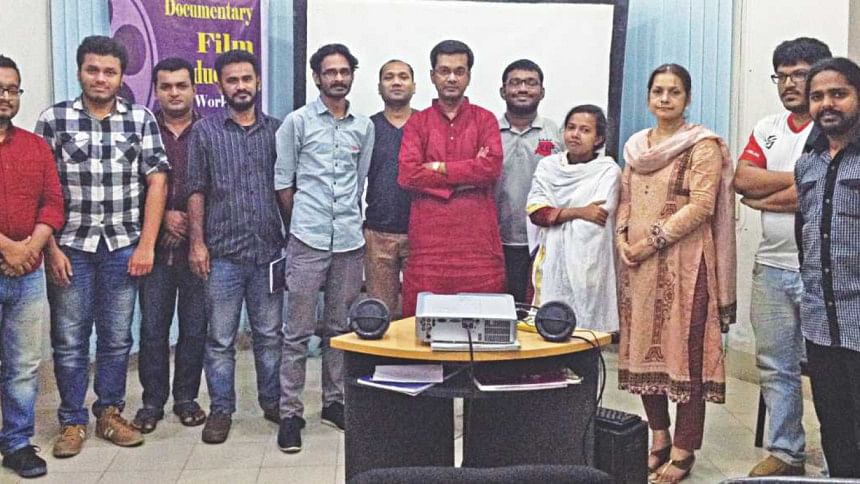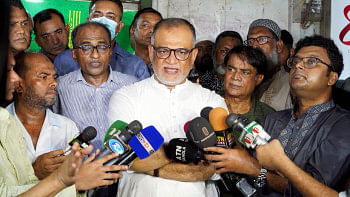Ideology in Representation

"Representation is always political. It must be. Period."
While talking to Amit Patra, the scholar and independent filmmaker from Kolkata, invited to conduct a workshop on Documentary Film Production, organized by the, Dhaka based, International Academy of Film and Media, from May 26 to June 4, 2017, the problematic of defining 'Documentary' was brought up right at the outset. Undoubtedly, documentaries are representations and, as the outstanding cultural theorist, Stuart Hall states, 'practices of representation always implicate positions from which we speak or write – the positions of enunciations'. This brings into question the ideology and the, culture specific, perception constituting a significant part of every act of formulating an image. The Bangla translation of documentaries as 'tothyo chitro', meaning informative films, or 'pramanyo chitro', or authoritative ones further complicate definitions.
The most famous definition, and still one of the most serviceable, is John Grierson's one terming documentaries as 'the creative treatment of actuality' (1966). American film critic Bill Nichols, however, locates and addresses the question of definitions within the manner in which power circulates in documentary discourses. 'Conventions circulate and they are negotiated and nailed down', Nichols says, 'in three discursive arenas or sites - a community of practitioners with its institutional supports, a corpus of texts, and a constituency of viewers.' All three have a common, self-chosen mandate that involves 'a representation or argument about the historical world'.
Maybe the most artfully constructed Bangladeshi documentary is the late filmmaker Zahir Rihan's 'Stop Genocide', where both the historicity and the arguments for its representation are crystal clear, undeniable and powerful. On the other hand, well-awarded Bangladeshi filmmaker resident in Germany, Shaheen Dill Riaz's 'Projectionist' chronicling the life of a boy and his world of dreams, is, as per the jury, 'a documentary film – but it exceeds reality'. This clearly shows the multiple and fluid nature of films denoted as 'documentaries'. Of course, the 'constituency of viewers' makes up a significant part of the entire enterprise of documentaries, given their willingness receive and interpret the images.
However, as Amit Patra tells the participants of the workshop, a documentary is a representation where the voice of the Director is all-important. It needs to be committed, transparent and explicit. Of course, Patra maintains, a ten-day workshop can merely lay down the basic trajectory from which a filmmaker's journey starts. Its goal is to put into place the matrix or framework from where the actual work begins.
The IAMF is to be congratulated for organizing the workshop with seven participants, both male and female, wherein both the theory of filmmaking and the actual hands on production of a documentary wasundertaken. The participants grouped together to make three films on the Shakhari Bazaar, on the floating markets on Buriganga River and on environmental pollution destroying the Buriganga. With DSLR's in hand the three groups undertook script writing, cinematography, and finally editing of their 5 min experimental documentary film production.
An important component of these projects are, undeniably, sponsorship or funding of the films. While government agencies do, at times, fund these films, it is mostly international funding agencies that form the bulk of the support. Crowd funding, the practice of funding a project or venture by raising monetary contributions from a large number of people, has recently been implemented by young filmmakers. Yet, funding remains one of the main obstacles.
On the concluding day Ismat Jahan, a photographer aspiring to turn filmmaker, and photographer Shoibal Shoikot screened 'Shakhari Bajarer karigorra ki hariye jacche?' their workshop based production. Indeed a commendable effort by the duo.
One hopes that more such initiatives are organized to help aspiring filmmakers to not just understand the concepts of documentary production, but also to learn the ropes of the technology behind it.

 For all latest news, follow The Daily Star's Google News channel.
For all latest news, follow The Daily Star's Google News channel. 



Comments